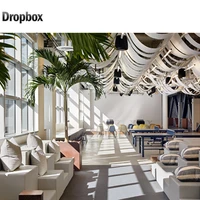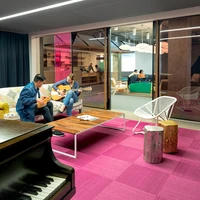Where the Future Happens
In September, we saw the launch of the eagerly anticipated Apple Watch. Much has already been said about the potential impact of this device on the worlds of consumer electronics, fashion, well-being and productivity. It’s certainly a step forward when compared with other computers for your wrist already on the market, whatever your view of the design – or indeed of Apple.
October 26, 2014 | 11:00 pm CUT

Geremia Design for Dropbox


Geremia Design for Instagram: Instagram, renowned for referencing the 1960s Kodak’s Instamatic square-shaped photos, has a recognisably retro feel throughout their office space. Bespoke details include a curated camera collection and custom furniture


Pinterest by First office and All of the Above: To fuel a ‘stag hungry’ ethos, Evan Sharp Pinterest’s founder wanted to make the space feel unfinished, as he didn't want the space to give the impression of success, complacency or decadence


Dropbox’s rapid growth rate as a business was a big challenge for Geremia design, the team had to think about what Dropbox as a company would need in the future and keep a sense of flexibility in the design for the company to grow into



Cisco by O+A: The Cisco offices in San Francisco, by Studio O+A, feature a medley of informal spaces, with lounge furnishings for more casual collaboration



Airbnb by Gensler and Interior Design Fair: The Airbnb office is a hollowed out warehouse that accommodates nearly 200 employees. The space has a massive three-floor ‘Gsky’ living green wall and replicas of actual homes listed on the airbnb website



IA interior architects turned a once cavernous warehouse into Twitters new HQ, with a yoga studio, fitness room, games rooms, cafeteria and roof garden to take in impressive views of the San Francisco skyline
Project Gallery




















